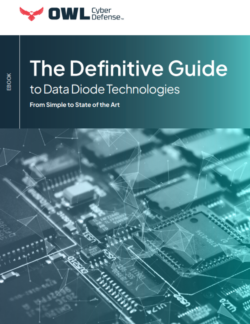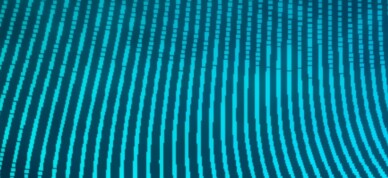In today’s hyperconnected world, the stakes for critical infrastructure security have never been higher. Sophisticated cyber threats—ransomware, supply chain attacks, and targeted intrusions—are now routinely aimed at operational technology (OT) environments in the power, oil and gas, and nuclear sectors. With regulatory pressures intensifying and the cost of downtime soaring, organizations need hardware-enforced solutions that deliver uncompromising protection. That’s why data diodes have become an essential pillar of modern cybersecurity.
What Is a Data Diode?
A data diode is a purpose-built hardware device that enforces one-way data transfer between segmented networks. Unlike software-based security solutions, data diodes physically prevent data from traveling back into a protected network, eliminating the risk of data leakage, external intrusion, and malware propagation. This creates an impenetrable barrier, ensuring sensitive OT environments remain isolated from external threats.
How Data Diode Technology Works
Data diodes operate on a simple but powerful principle: one-way communication, enforced at the hardware level. Owl Cyber Defense data diodes consist of paired send and receive modules. The “send” module transmits data, while the “receive” module is engineered to accept data—making reverse data flow physically impossible. This architecture forms a robust “air gap” between networks, effectively blocking even the most advanced cyber threats.
A defining feature of Owl’s Protocol Filtering Diode (PFD) is its advanced protocol inspection at the hardware level. As data passes through the PFD, not only is one-way transfer strictly enforced, but each data packet is also deeply inspected and filtered by Field-Programmable Gate Arrays (FPGAs). This ensures that only authorized and safe information leaves the secure network, while any unauthorized or potentially malicious content is blocked before transmission. By combining hardware-enforced unidirectional flow with real-time protocol filtering, PFDs conceal critical network details and neutralize hidden threats within data streams—delivering a level of assurance that goes far beyond basic isolation.
Data Diodes vs. Firewalls: Why Hardware Matters
While firewalls are a staple of network security, they are fundamentally software solutions—vulnerable to exploits, misconfigurations, and zero-day attacks. Data diodes, by contrast, are hardware-enforced and deterministic. They cannot be reprogrammed, bypassed, or tricked into operating in unintended ways. This makes them the gold standard for securing the world’s most sensitive and regulated environments.
In many deployments, data diodes complement firewalls as part of a defense-in-depth strategy. In high-assurance environments, organizations increasingly rely on data diodes to replace or augment firewalls, achieving a level of security that software alone cannot provide.
Data Diodes vs. Unidirectional Gateways
Not all “unidirectional” solutions are created equal. True data diodes—like those engineered by Owl Cyber Defense—meet rigorous international certification standards and are designed for high throughput, multi-protocol support, and zero bottlenecks. In contrast, unidirectional gateways may rely on software or hybrid architectures, often limiting them to single-protocol or single-device connections and exposing them to potential vulnerabilities.
Who Relies on Data Diodes?
Data diodes have become a cornerstone of cybersecurity for the world’s most critical infrastructure sectors—where operational continuity and regulatory compliance are non-negotiable.
Power Generation and Transmission
In the power sector, data diodes enforce unidirectional data flow between OT networks and enterprise or cloud environments. This ensures that real-time operational data, such as status updates from turbines or substations, can be securely exported for monitoring and analytics—without exposing the control network to external threats. By physically blocking inbound traffic, data diodes prevent malware, ransomware, and unauthorized commands from ever reaching sensitive equipment, supporting compliance with NERC-CIP and IEC 62443 standards.
Oil & Gas / Midstream Operations
For oil and gas producers, refiners, and midstream operators, data diodes protect field assets, SCADA systems, and process control networks. They enable secure, one-way transfer of sensor and production data from pipelines, refineries, and remote sites to corporate IT or third-party monitoring systems. This architecture isolates critical OT environments from external networks, eliminating the risk of cyber intrusion or data exfiltration while ensuring compliance with industry regulations and directives.
Nuclear Facilities
Nuclear power plants and research facilities require the highest levels of assurance for both safety and cybersecurity. Data diodes provide a hardware-enforced barrier that allows for the secure export of operational data and regulatory reporting, while physically preventing any inbound connectivity that could be exploited by attackers. This approach aligns with the strictest nuclear regulatory requirements, ensuring network segmentation, data integrity, and operational resilience.
Across these sectors, data diodes deliver a simple but powerful value proposition: enable the secure transfer of essential data out of critical environments, while making it physically impossible for cyber threats to reach mission-critical systems. This hardware-based approach is recognized by leading standards bodies—including NIST, NERC, and IEC—as a best practice for protecting industrial control systems and maintaining compliance in high-risk environments.
Can Data Diodes Enable Two-Way Communication?
Yes—Owl Cyber Defense’s innovative solutions, like the Owl Talon One: Bidirectional, enable secure two-way data flows by combining two independent one-way paths within a single, hardened device. This architecture maintains strict network segmentation and hardware-enforced security, allowing for remote monitoring, command and control, and SCADA data replication with minimal risk.
Future-Proofing Critical Infrastructure
Owl Cyber Defense is committed to advancing data diode technology to meet the evolving needs of critical infrastructure:
- Expanded Protocol Support: Ongoing development ensures compatibility with emerging industrial and cloud protocols.
- AI-Driven Monitoring: Integration with AI and machine learning enables advanced anomaly detection and predictive maintenance.
- Modular and Edge-Ready Designs: New form factors, including DIN-rail and ruggedized models, support deployment in remote substations, offshore platforms, and unmanned sites.
- Cloud & IT/OT Convergence: Solutions are engineered for seamless, secure data transfer between OT networks and cloud analytics platforms.
Cost-Effectiveness and Total Value
Data diodes deliver unmatched security and reliability while reducing the total cost of ownership. With minimal maintenance requirements, no software patching, and proven operational resilience, Owl Cyber Defense data diodes offer superior value compared to firewalls, unidirectional gateways, or any competing technology.
Frequently Asked Questions
Q: Can data diodes support real-time cloud analytics?
A: Yes. Owl Cyber Defense data diodes enable secure, one-way transfer of operational data to cloud platforms, keeping OT environments isolated from inbound threats.
Q: How do data diodes differ from firewalls?
A: Data diodes enforce one-way data flow at the hardware level, eliminating software vulnerabilities and ensuring absolute network segmentation.
The Future of Cybersecurity Is Hardware-Enforced
As cyber threats continue to evolve, so must our defenses. Data diodes have emerged as a cornerstone of modern cybersecurity strategies—trusted by the world’s most security-conscious organizations to protect what matters most.
Ready to learn more about how data diode technology can safeguard your organization?
Download the Definitive Guide to Data Diode Technology.





